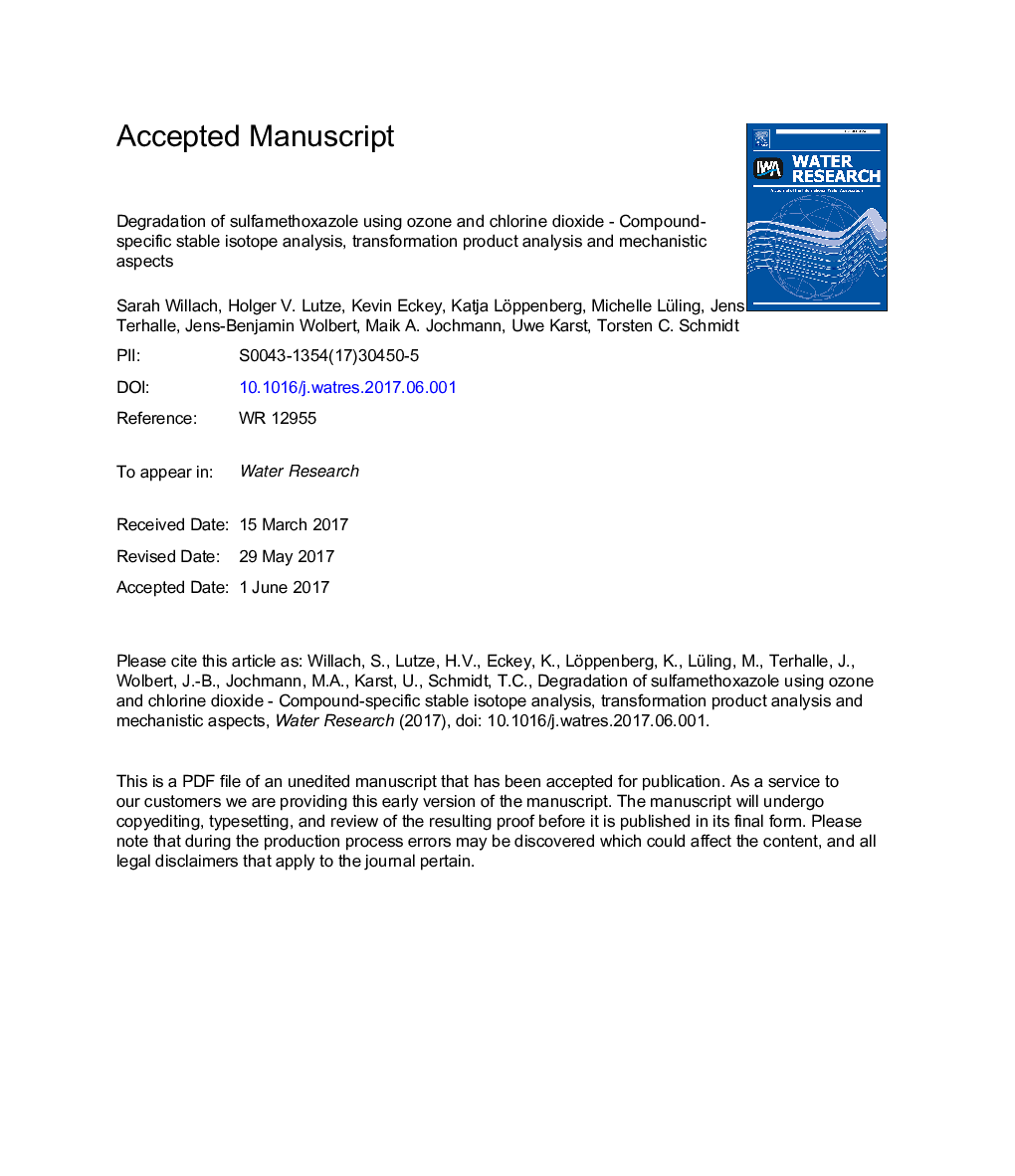| کد مقاله | کد نشریه | سال انتشار | مقاله انگلیسی | نسخه تمام متن |
|---|---|---|---|---|
| 5759390 | 1623046 | 2017 | 38 صفحه PDF | دانلود رایگان |
عنوان انگلیسی مقاله ISI
Degradation of sulfamethoxazole using ozone and chlorine dioxide - Compound-specific stable isotope analysis, transformation product analysis and mechanistic aspects
ترجمه فارسی عنوان
تجزیه سولفامتوکسازول با استفاده از ازن و دی اکسید کلر - تجزیه و تحلیل ایزوتوپ پایدار با ترکیب خاص، تجزیه و تحلیل محصول تحول و جنبه های مکانیکی
دانلود مقاله + سفارش ترجمه
دانلود مقاله ISI انگلیسی
رایگان برای ایرانیان
کلمات کلیدی
موضوعات مرتبط
مهندسی و علوم پایه
علوم زمین و سیارات
فرآیندهای سطح زمین
چکیده انگلیسی
The sulfonamide antibiotic sulfamethoxazole (SMX) is a widely detected micropollutant in surface and groundwaters. Oxidative treatment with e.g. ozone or chlorine dioxide is regularly applied for disinfection purposes at the same time exhibiting a high potential for removal of micropollutants. Especially for nitrogen containing compounds such as SMX, the related reaction mechanisms are largely unknown. In this study, we systematically investigated reaction stoichiometry, product formation and reaction mechanisms in reactions of SMX with ozone and chlorine dioxide. To this end, the neutral and anionic SMX species, which may occur at typical pH-values of water treatment were studied. Two moles of chlorine dioxide and approximately three moles of ozone were consumed per mole SMX degraded. Oxidation of SMX with ozone and chlorine dioxide leads in both cases to six major transformation products (TPs) as revealed by high-resolution mass spectrometry (HRMS). Tentatively formulated TP structures from other studies could partly be confirmed by compound-specific stable isotope analysis (CSIA). However, for one TP, a hydroxylated SMX, it was not possible by HRMS alone to identify whether hydroxylation occurred at the aromatic ring, as suggested in literature before, or at the anilinic nitrogen. By means of CSIA and an analytical standard it was possible to identify sulfamethoxazole hydroxylamine unequivocally as one of the TPs of the reaction of SMX with ozone as well as with chlorine dioxide. H-abstraction and electron transfer at the anilinic nitrogen are suggested as likely initial reactions of ozone and chlorine dioxide, respectively, leading to its formation. Oxidation of anionic SMX with ozone did not show any significant isotopic fractionation whereas the other reactions studied resulted in a significant carbon isotope fractionation.
ناشر
Database: Elsevier - ScienceDirect (ساینس دایرکت)
Journal: Water Research - Volume 122, 1 October 2017, Pages 280-289
Journal: Water Research - Volume 122, 1 October 2017, Pages 280-289
نویسندگان
Sarah Willach, Holger V. Lutze, Kevin Eckey, Katja Löppenberg, Michelle Lüling, Jens Terhalle, Jens-Benjamin Wolbert, Maik A. Jochmann, Uwe Karst, Torsten C. Schmidt,
